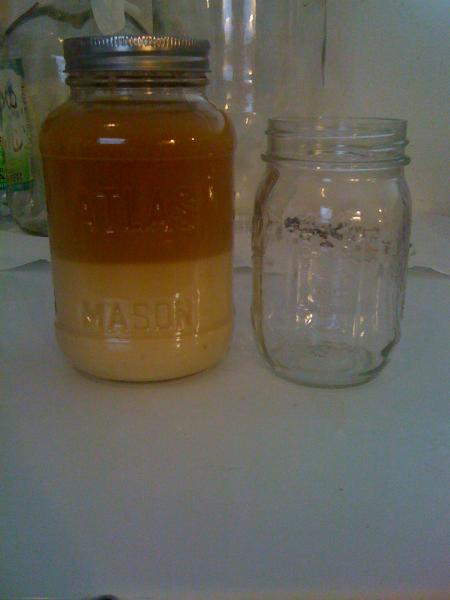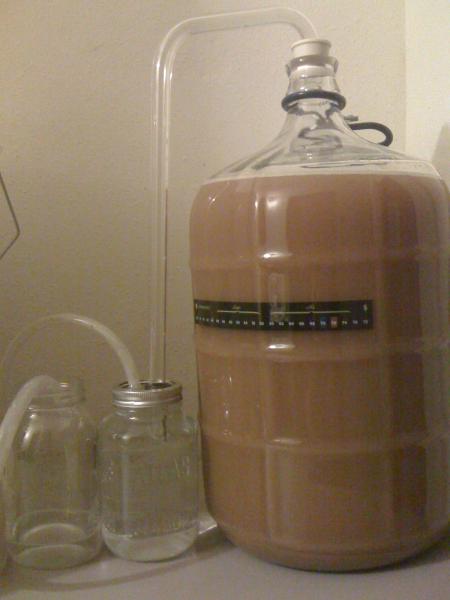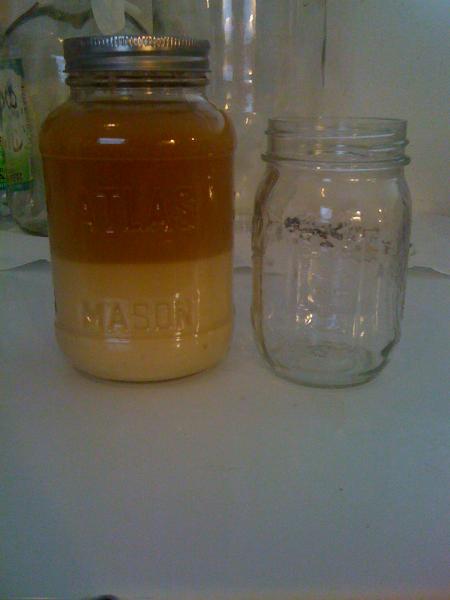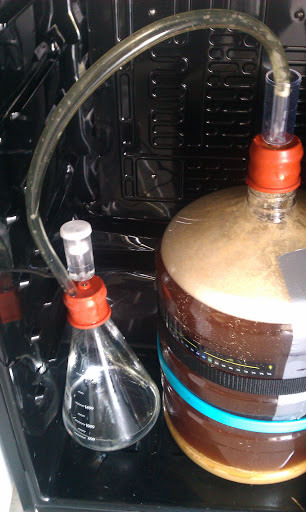So I'm just doing this for the hell of it to see what happens. I know there are lots of threads about krausen "skimming/harvesting" but I didn't see anything like this setup I put together (not saying it hasn't been done before cause basically every "idea" I think of has an existing thread about it). I have rigged up a setup that basically is a blow-off tube going into a large sealed mason jar that is filled with sterilized water for when I wash yeast. From there it has a second tube going from the same sterilized water container into a second mason jar with star San in it. So basically blow-off tube in and blow-off tube out of mason jar of sanitized water.
The idea is to see if I can "catch" the yeast from the krausen blow-off tube in the first jar of sterilized water and have the second jar there to catch the rest of the blow-off and keep infection from going back into the first yeast "catcher"
UPDATE:
Well heres a pic of what i collected from a batch of graff. It was made with a starter of WLP001 california ale yeast. As with most my other batches of graff there was a tremendous amount of krausen blow-off. Im gonna put it in the refrigerator to see how it settles. If it compacts down a lot I will post another picture. Sure is a lot of yeast. Thats a Quart mason jar that the yeast is in. Whats your thoughts?


The idea is to see if I can "catch" the yeast from the krausen blow-off tube in the first jar of sterilized water and have the second jar there to catch the rest of the blow-off and keep infection from going back into the first yeast "catcher"
UPDATE:
Well heres a pic of what i collected from a batch of graff. It was made with a starter of WLP001 california ale yeast. As with most my other batches of graff there was a tremendous amount of krausen blow-off. Im gonna put it in the refrigerator to see how it settles. If it compacts down a lot I will post another picture. Sure is a lot of yeast. Thats a Quart mason jar that the yeast is in. Whats your thoughts?







